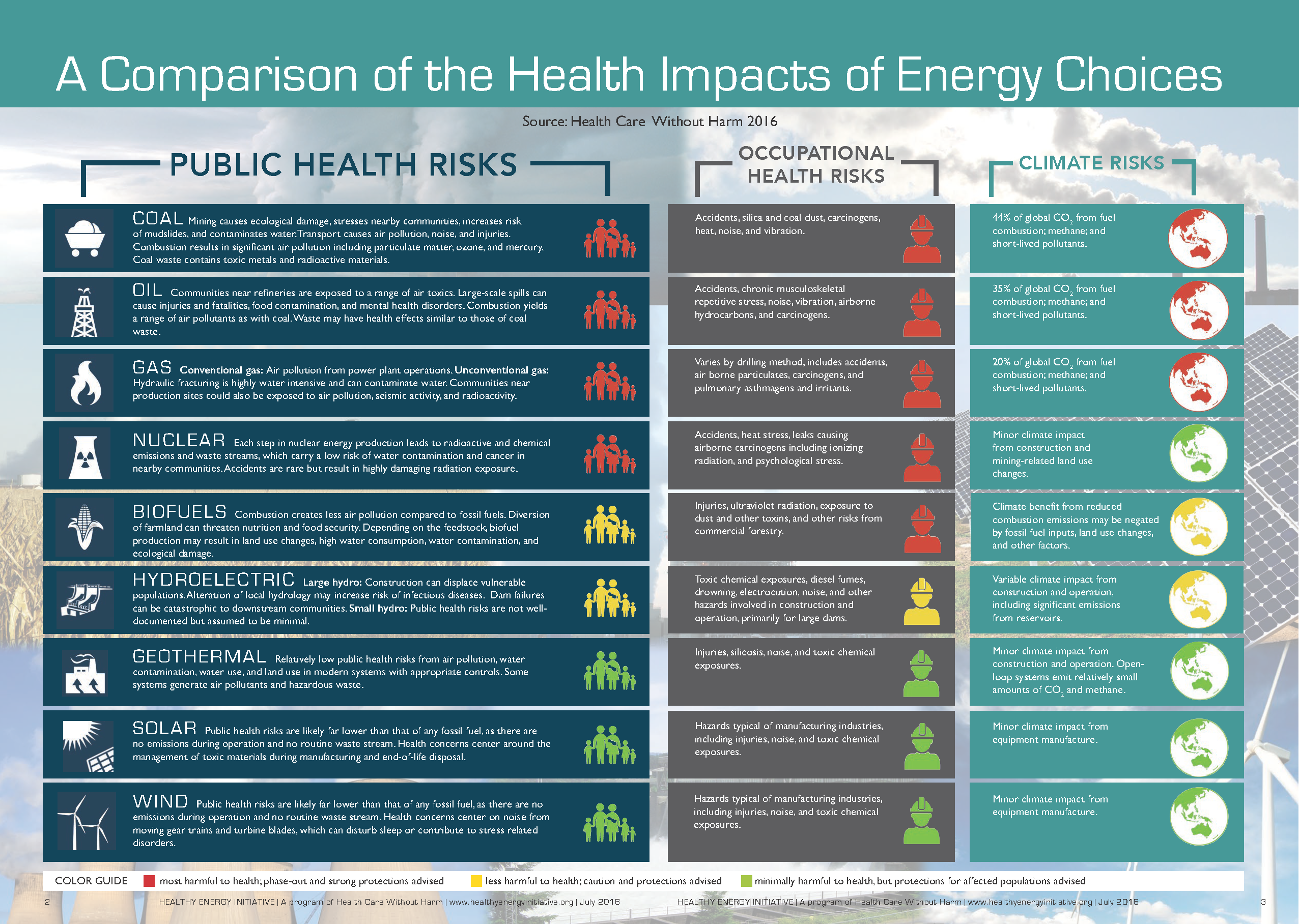The health care industry is the only sector with health as its core mission. Open 24/7 and buzzing with high-tech, life-saving equipment, hospitals are incredibly energy-intensive facilities, consuming roughly 2.5 times more energy per square foot than a typical commercial office space.
While being used to save lives and improve patient health, this energy is often generated by the combustion of fossil fuels that contribute to pollution, disease, and climate change, which leads to numerous damaging health effects.
Globally, outdoor air pollution kills more than 4.5 million people each year, and the World Health Organization estimates climate change will cause 250,000 additional deaths annually between 2030 and 2050. Health Care Without Harm’s energy and health impact calculator can help quantify the health impacts and costs of energy use emissions, as well as the benefits of renewable energy.

Opportunities for change
Health leaders are recognizing the impacts of energy use on the communities they serve and have started making changes to ensure their energy use does no harm. These actions are facilitating a clean energy transition and building a cleaner, healthier, and more resilient future. Taking action is also often good business for hospitals, as energy efficiency measures and renewable energy can reduce bills and cost volatility, freeing up resources to improve patient care.
Hospitals can address environmental impacts by reducing the amount of energy they consume through ongoing efficiency and management improvements (efficient buildings, medical equipment, lighting, and vehicle fleets) and getting energy from clean, renewable sources.
Hospitals use fossil fuels for energy in two main ways, and opportunities exist for eliminating or reducing emissions:
• Combustion of fossil fuels on site can heat and cool buildings and water, power cogeneration facilities, cook food, and power fleet vehicles. Some sources of energy can be eliminated with technologies that are readily available. For example, despite higher upfront cost, many electric vehicles offer a lower total cost of ownership when compared to internal combustion vehicles due to lower ongoing fuel and maintenance costs. This is also true for cooking with induction stoves. Applications such as air and ground-source heat pumps and solar hot water offer promising solutions, and green hydrogen is being pioneered for heating and cooling large facilities. Switching to cleaner fuels such as responsibly sourced biofuels and landfill gas can be highly impactful, short-term solutions if done right but can still create negative health impacts. The use of biofuels can lead to deforestation and other land-use changes, as well as reduce or negate positive impacts by taking away trees and land that stores carbon.
• Electricity or steam is produced through the offsite burning of fossil fuels such as coal or natural gas in power or steam plants. Solar and wind power can be swapped for electricity generated by fossil fuels, often at a lower cost (though in some markets, utilities have made it difficult to access low-cost renewable electricity). The high-impact business case and relative simplicity of making the transition to renewable electricity has made it a cornerstone of many health systems’ climate strategies.
Renewable opportunity
Over the last decade, developments in technology and the rapid expansion of renewable energy markets have reduced the cost of wind power by 70% and solar power by nearly 90%. The 2019 Bloomberg new energy future report found that electricity from these two renewable sources is the least expensive energy source in more than half the world and is on track to be the least expensive source almost everywhere by 2030.
By setting and pursuing goals toward a renewable energy transition, health care institutions have an opportunity to advance their core mission by reducing harmful air pollution and health inequities that arise from the undue burden their facilities place on low-income communities and communities of color. Health systems can publicly position themselves as leaders in the effort to mitigate climate change and leverage their purchasing and reputational power to advance clean energy, all while reducing energy costs and price volatility.
Because of the opportunity renewable energy has to reduce costs for health care facilities and harm to public health, Practice Greenhealth urges health care providers to commit to achieving a goal of 100% renewable electricity by 2030.
Learn more about the different types of renewable energy and their use by hospitals.
Understand strategies for renewable energy procurement.
